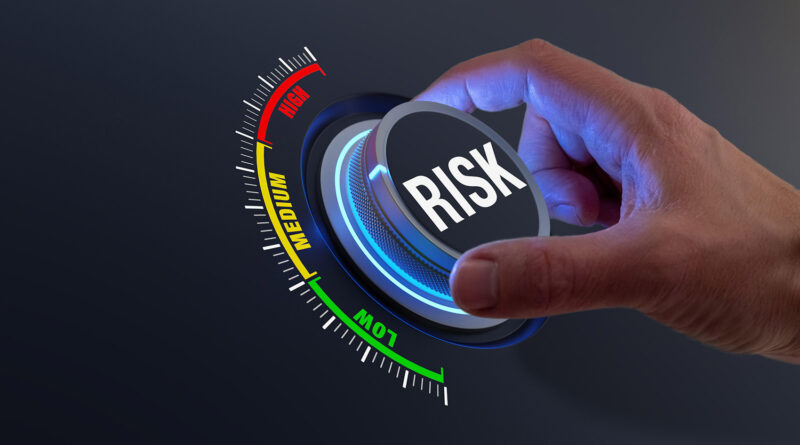How Can We Mitigate the Security Risks of Advancing Technology?
As technology continues to advance, bringing new innovations and efficiencies, it also introduces a host of security risks that can have far-reaching consequences. From the proliferation of personal data across digital platforms to the rise of artificial intelligence (AI) and the Internet of Things (IoT), the potential for cyberattacks, data breaches, and other security vulnerabilities is growing. The increasing sophistication of cybercriminals further exacerbates these risks, making it crucial for organizations, governments, and individuals to adopt proactive measures to mitigate the security threats posed by new technologies.
In this article, we’ll explore how we can mitigate the security risks of advancing technology, focusing on strategies and best practices to safeguard data, systems, and users.
1. Strengthening Cybersecurity Protocols
One of the primary ways to mitigate the security risks of advancing technology is by strengthening cybersecurity protocols. As technology evolves, so do the tactics of cybercriminals, making it essential to keep cybersecurity practices up to date.
Key Actions
- Multi-factor Authentication (MFA): Enforcing MFA adds an extra layer of protection to online accounts and sensitive systems by requiring users to authenticate themselves using multiple forms of verification, such as a password and a fingerprint.
- Regular Software Updates: Security patches and updates are often released to address vulnerabilities. Ensuring that all software, operating systems, and applications are updated regularly can help prevent attackers from exploiting known weaknesses.
- Endpoint Protection: Devices such as smartphones, computers, and IoT devices are often targets for cybercriminals. Installing robust endpoint protection software that detects and responds to security threats is critical for safeguarding these devices.
2. Securing Personal Data with Encryption
Advancements in technology have led to an explosion of personal data being stored online, from financial information and health records to social media activity. Protecting this data from unauthorized access is crucial.
The Importance of Encryption
Encryption is one of the most effective tools for securing data. It involves converting readable data into an unreadable format that can only be decrypted with a specific key. By encrypting sensitive data, whether it’s in transit (such as emails or transactions) or at rest (such as stored files), organizations and individuals can significantly reduce the risk of data breaches.
Key Actions
- End-to-End Encryption: Implementing end-to-end encryption ensures that data is encrypted at both ends of the communication, preventing unauthorized interception.
- Secure File Storage: Cloud services and local storage should use encryption protocols to keep stored data secure from unauthorized access.
- Regular Backup and Recovery: Regularly backing up encrypted data ensures that in the event of a cyberattack or data loss, there is a secure and up-to-date copy available for recovery.
3. Implementing Strong Access Control and Monitoring
As systems become more interconnected, limiting access to sensitive data and systems is more important than ever. Access control mechanisms ensure that only authorized users have the ability to access critical systems and information.
The Risks of Poor Access Control
Weak access controls can result in data breaches, unauthorized actions by employees, or hackers gaining access to sensitive systems. To mitigate these risks, it’s essential to implement strict access control policies.
Key Actions
- Role-Based Access Control (RBAC): This ensures that users only have access to the data and systems necessary for their job functions. Limiting access based on roles reduces the attack surface.
- Access Monitoring: Continuous monitoring of access attempts and behavior patterns can help detect unauthorized access or suspicious activity before it leads to a breach.
- Least Privilege Principle: Ensuring that users have the minimum level of access needed to perform their duties can significantly reduce the risk of data breaches and insider threats.
4. Educating Users and Employees on Security Best Practices
Human error remains one of the most significant security vulnerabilities in the face of advancing technology. Whether it’s falling victim to a phishing scam, using weak passwords, or sharing sensitive information unknowingly, educating individuals on security best practices is key to mitigating these risks.
Key Actions
- Security Awareness Training: Regular training for employees and individuals on the latest cybersecurity threats, including phishing attacks, social engineering, and password security, can help them recognize and respond to potential threats.
- Strong Password Policies: Encourage the use of complex passwords and a password manager to store and generate secure passwords for different accounts. Avoiding the use of weak or repeated passwords can significantly reduce the risk of hacking.
- Regular Phishing Simulations: Conducting phishing simulations helps individuals become familiar with common attack tactics and better recognize fraudulent messages or emails.
5. Leveraging Artificial Intelligence and Machine Learning for Cybersecurity
The integration of artificial intelligence (AI) and machine learning (ML) into cybersecurity tools has proven to be a game-changer in detecting and responding to threats more quickly and effectively.
Key Actions
- Automated Threat Detection: AI and ML algorithms can be used to detect abnormal patterns of behavior in real-time, such as unusual login times or unauthorized access attempts, allowing for rapid response to potential security breaches.
- Predictive Analytics: By analyzing large volumes of data, AI can predict and prevent cyberattacks before they occur, identifying potential vulnerabilities and mitigating them proactively.
- Continuous Monitoring and Response: AI-powered security systems can monitor networks and devices 24/7, automatically adjusting defenses in response to emerging threats and adapting to new attack methods.
6. Securing the Internet of Things (IoT)
The increasing adoption of IoT devices—ranging from smart thermostats and cameras to connected vehicles—has introduced new vulnerabilities to the digital ecosystem. IoT devices often lack sufficient security features, making them attractive targets for hackers.
Key Actions
- Change Default Passwords: Many IoT devices come with default passwords that are easy for hackers to guess. Changing these passwords immediately after installation is a simple but important step.
- Network Segmentation: IoT devices should be placed on a separate network from critical systems and data. This can help contain any potential breaches to the IoT network without compromising other parts of the system.
- Regular Firmware Updates: Manufacturers should provide regular firmware updates to fix security vulnerabilities in IoT devices, and users should ensure that these updates are applied promptly.
7. Developing a Comprehensive Incident Response Plan
No matter how robust the security measures are, there is always the possibility that a security breach could occur. Having a well-defined incident response plan (IRP) in place can help minimize damage and quickly restore operations.
Key Actions
- Preparation: Ensure that employees are familiar with the incident response plan and know their roles in the event of a security breach.
- Detection and Analysis: Quickly identifying the source of the attack and analyzing its scope is crucial to mitigating damage.
- Containment and Recovery: Effective containment strategies can prevent the attack from spreading, and a recovery plan will help ensure the system can be restored quickly.
- Post-Incident Review: After a security breach, a thorough review of the incident can help identify weaknesses in the system and improve future defenses.
Conclusion
As technology continues to advance at an unprecedented pace, mitigating the security risks associated with these innovations is essential. By strengthening cybersecurity protocols, encrypting personal data, implementing access control, educating users, leveraging AI tools, securing IoT devices, and having an incident response plan in place, we can create a safer digital environment. It is crucial for both individuals and organizations to stay vigilant and proactive to stay ahead of evolving cyber threats and protect sensitive data from malicious actors.

